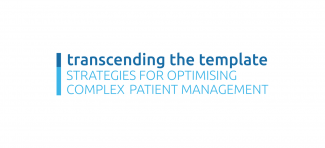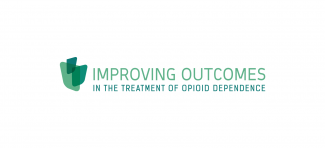There are many different blood borne viruses (BBVs) that you may have heard of but perhaps the most famous of all is HIV, which has typically saturated both the scientific literature and public media channels since the global recognition of the HIV epidemic in 20th century. (1-2)
Although there has been little limelight left to share amongst the other BBVs, it would be a fatal oversight to underestimate the impact of viral hepatitis. In fact, 2016 data shows that viral hepatitis is a leading cause of death globally with a death toll exceeding that of HIV (1.3 million deaths), tuberculosis (1.2 million deaths) and malaria (0.5 million deaths) (3)
Focusing on hepatitis C (hep C) specifically, the most recent national estimates suggest that 214, 000 individuals are chronically infected in the UK alone – which is even more alarming when you consider that chronic hep C infection is: (1-2)
- The second most common cause of liver transplant in the UK (4)
- A risk factor for developing liver failure or liver cancer (5)
- In England, only 35% of adults diagnosed with primary liver cancer will survive for 1 year or more after diagnosis (6)
So it should come as no surprise that we need to act.
Earlier this year (2016), The World Health Organization (WHO) finalised a set of global viral hepatitis elimination targets, including a 90% reduction in incidence (new infections) and a 65% reduction in viral hepatitis-related deaths by 2030 compared with 2015. (3) While these targets may seem ambitious, there is hope that they will be achievable.
Typically, older treatments for hep C were less effective, lasted much longer and had significant side-effects compared to newer treatments (direct-acting antivirals); however, it is now possible to cure over 90% of people infected with hep C within 3-6 months. (7-8) In addition, the side effects of newer treatments are usually mild.(7)
As the new era of hep C treatment takes hold, there is increasing focus on people who inject drugs (PWID) and the pivotal role they will play in achieving the targets set forth by WHO. In 2011, it was reported that up to 67% of PWID worldwide are hep-C positive so treating and curing this population will have a huge impact on transmission rates, greatly reducing the global burden of hep C. (9-11)
In addition, there are case studies which suggest that treating hep C can be a huge personal achievement for PWID and it is speculated that this cure can have an enduring and positive influence on individual lives.
However, even though addiction is recognised as a chronic, relapsing medical condition there is still a level of stigma that all-too-often surrounds PWID. So there are three key things to remember when someone asks you ‘Why should we treat hep C in PWID?’:
- Ongoing alcohol or drug use is not a barrier to successful treatment – hep C cure rates are as high in PWID as in the general population. (12)
- Reported rates of re-infection after successful hep C treatment, among high-risk patients including PWID, are low (approx. 1-8% annually) (12)
- Treating hep C positive PWID will be a fundamental step to reducing hep C transmission rates and ultimately prevalence (10-11)
Although all cases for hep C treatment should be considered on a case-by-case basis, it is crucial that we work together as a community of professionals and friends to ensure that stigma does not stand in the way of PWID receiving the hep C treatment that they need – both for their own health and well-being, and for the good of the others worldwide.
References
- UNAIDS, 2016. How AIDS changed everything. MDG 6: 15 years, 15 lessons of hope from the AIDS response. [Online] Available at: http://www.unaids.org/sites/default/files/media_asset/MDG6Report_en.pdf [Accessed 31 Oct 2016].
- Joint United Nations Program on HIV/AIDS, June 2000. Report on the HIV/AIDS global epidemic. [Online] Available at: http://data.unaids.org/pub/Report/2000/2000_gr_en.pdf [Accessed 31 Oct 2016].
- World Health Organisation, 2016. Combating hepatitis B and C to reach elimination by 2030. [Online] Available at: http://apps.who.int/iris/bitstream/10665/206453/1/WHO_HIV_2016.04_eng.pdf?ua=1 [Accessed 31 Oct 2016].
- Hep C Trust, 2016. Liver transplants [Online] Available at: http://www.hepctrust.org.uk/liver-transplants [Accessed 31 Oct 2016].
- American Liver Foundation, 2016. Complications of chronic hep C. [Online] Available at: http://hepc.liverfoundation.org/what-is-hepatitis-c/what-can-happen-complications-of-hep-c/ [Accessed 31 Oct 2016].
- Cancer research UK, 2016. Liver cancer. [Online] Available at: http://www.cancerresearchuk.org/about-cancer/type/liver-cancer/treatment/statistics-and-outlook-for-liver-cancer [Accessed 31 Oct 2016].
- World Health Organization, 2016. WHO issuing updated guidelines for treatment of hepatitis C infection. [Online] Available at: http://www.who.int/hepatitis/news-events/hepatitis-c-guidelines-2016-story/en/ [Accessed 31 Oct 2016].
- World Health Organisation, 2016. Hepatitis C: Fact sheet. [Online] Available at: http://www.who.int/hepatitis/news-events/hepatitis-c-guidelines-2016-story/en/ [Accessed 31 Oct 2016].
- Nelson, N., 2011. The epidemiology of viral hepatitis among people who inject drugs: Results of global systematic reviews. Lancet, 375(9791), p. 13.
- Hickman, M., 2015. How should scale up of HCV antiviral treatment be prioritized? A cost-effectiveness analysis including individual and population prevention benefits, in EASL. The International Liver Congress, p. 1271.
- Hickman, M., 2015. Hepatitis C virus treatments prevention in people who inject drugs: testing the evidence. Curr Opin Infect Dis, 28(6), pp. 576-582.
- EASL, 2016. EASL Recommendations on Treatment of Hepatitis C. J Hepatol. [Article in press]





